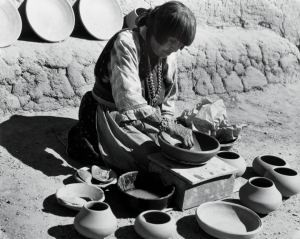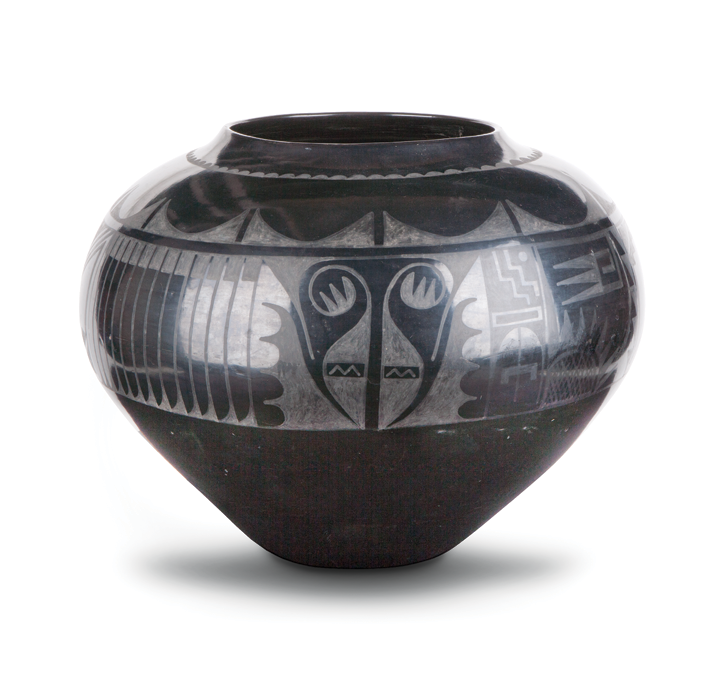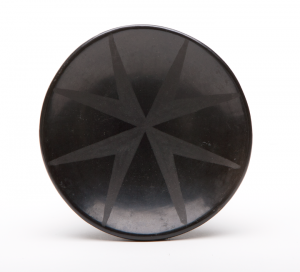Contemporaries and friends, potter Maria Martinez (ca. 1887–1980) and photographer Laura Gilpin (1891–1979) brought the American Southwest into focus as a culturally rich region that fostered artistic expression. The exhibition New Ground: The Southwest of Maria Martinez and Laura Gilpin pairs 26 ceramic pieces by Martinez and her family with more than 40 vintage photographs by Gilpin.

Maria Martinez is one of the best-known indigenous artists of the 20th century. She belonged to the Tewa linguistic group and lived at San Ildefonso Pueblo, northwest of Santa Fe. Martinez is recognized internationally for the distinctive black-on-black pottery that she developed with her husband, Julian, based on the remains of ancient ceramics.
In 1907 Edgar Lee Hewett, an archaeologist and the first director of the Museum of New Mexico (now the New Mexico Museum of Art), excavated shards of ancient Pueblo pottery at the nearby Pajarito Plateau. Hewett encouraged Maria and Julian Martinez to experiment with various firing and painting techniques in order to create contemporary versions of the artifacts. By 1921, the couple had mastered their process of making pottery with a highly glossed finish and matte-black designs.
Maria Martinez learned the fundamentals of pottery-making from her maternal aunt. Once the clay dug from the earth had been prepared, Martinez formed snake-like coils of clay that she pinched together to create the basic shape of the pot. She then scraped and smoothed the coils together until the pot was the same thickness all the way around. When it was dry enough to handle, a thin layer of slip (watery clay) was applied over the pot, and then the surface was polished using a smooth, fine-grained stone.

Tewa prayers were said while digging the clay as well as during the firing process, thanking the Great Spirit and Mother Earth for the gift of the clay. The designs, initially made by Julian and later by other family members, were painted using slip applied with a brush to the burnished but unfired pot.

Martinez’s pots quickly grew in popularity, and her work was celebrated at art shows, expositions, and fairs nationwide. Her pots were in such demand by the 1920s that she began signing her work—the first Pueblo potter to do so. The popularity of her work was related not only to its highly skilled construction but also because it fit into the modernist aesthetic.
Martinez went on to teach the process to members of her family and others in her community. Through her creative vision and craftsmanship, Martinez influenced generations of Native artists. She is recognized as a master artist, and her work is found in many major art museums.
Visit the museum and explore New Ground, on view through May 14, 2017.
